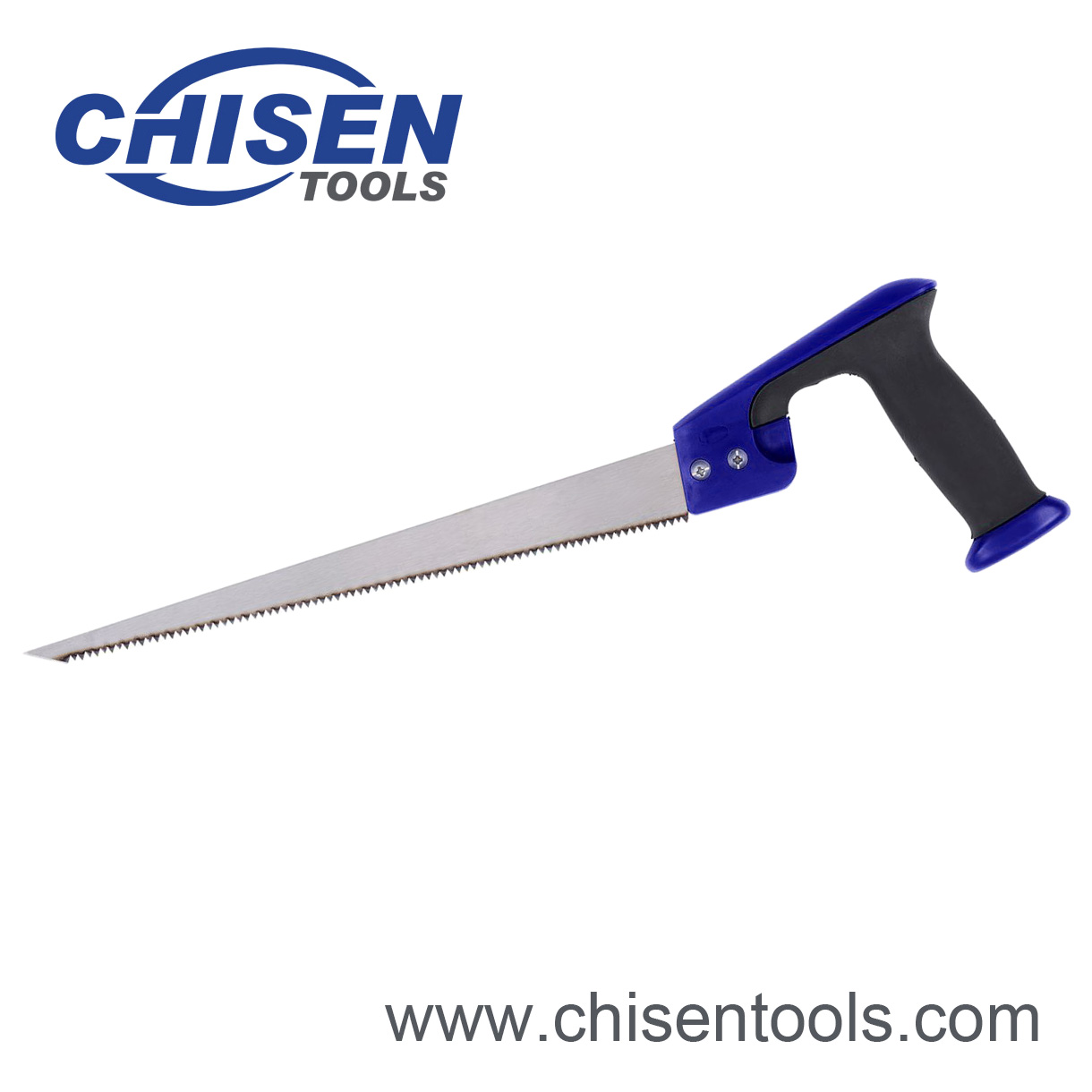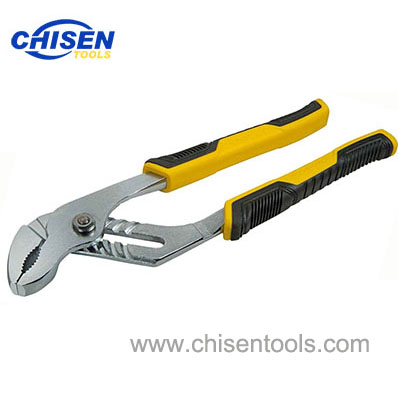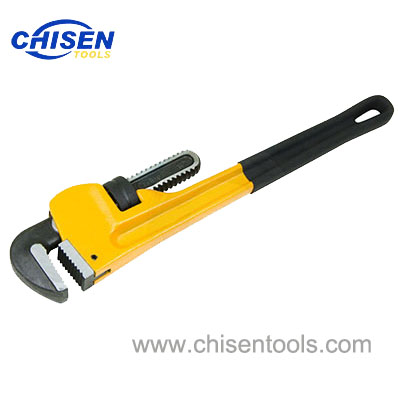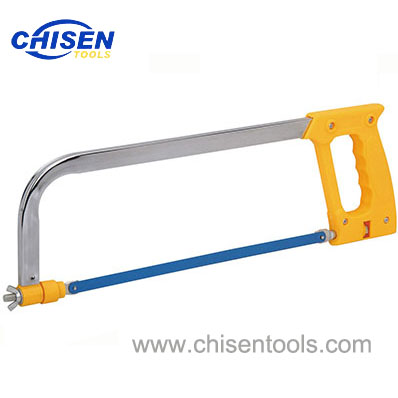Compass Saw
Premium quality compass saw, keyhole saw.
| Item No.: | CS048052 |
| Material of Blade: | 65Mn steel |
| Material of Handles: | Plastic Handle |
| Size: | 12" | 300mm |
| Blade TPI: | 9 TPI, heat treated, Precision ground teeth 3 edges |
| Application: | Cutting and carving jobs may require you to reach into small or obstructed areas; The blade on this drywall saw knife is ideal for cutting in tight spaces |
Detailed Description:
Chinese professional manufacturer of compass saw, keyhole saw

What is Compass Saw?
A compass saw (also called a keyhole saw) has a long tapered blade and a curved handle.Why is it called a compass saw?
As well as a device that points north, the word compass also refers to an instrument used for marking out a circle or curve, something the compass saw is specifically designed to do.Compass Saw's Application
A compass saw is designed for cutting curves or working in awkward and confined spaces where a larger saw could not fit. It’s similar to an angle grinder, but get a lot more accuracy and a better quality finish.For home improvement generally, you’ll find that a compass saw comes in handy. Every home should have one. One of the occasions you might need to use a compass saw is when putting up blinds or shutters. It leaves a lovely clean finished.
Isn’t that what a coping or fret saw does?
Yes, however a compass saw can cut through thicker materials more quickly and does not create as neat a finish. This is because the blade has larger and fewer teeth per inch, so it can cut and remove more material with each stroke. The thin tip of the blade allows for cutting extremely tight curves, like those of a keyhole (which is why it is often referred to as a keyhole saw).Compass saws are designed for use in all types of wood and plastic as well as non-ferrous metals.
Compass Saw's Characteristics
Blade
Like the blade of a drywall saw, a compass saw has a tapered blade ending in a sharp point.These two saws differ in that a compass saw has a longer blade and usually has more teeth per inch. Blades are usually 150mm (5.9″ approx.) in length.
Cutting stroke
On most compass saws, the teeth point away from the handle, meaning that the saw cuts on the push stroke.Teeth Per Inch (TPI)
Compass saws usually have between 8 and 10 teeth per inch.A blade with more teeth per inch will be able to create a slightly neater finish, but the cutting process will take longer.
Handle
A compass saw has what’s known as an open pistol grip handle. This type of handle is often found on saws which are designed for working in awkward or confined spaces.The curved handle makes cutting overhead easier, and as the handle is lighter, there is less strain on the user’s arm and wrist as a result.




